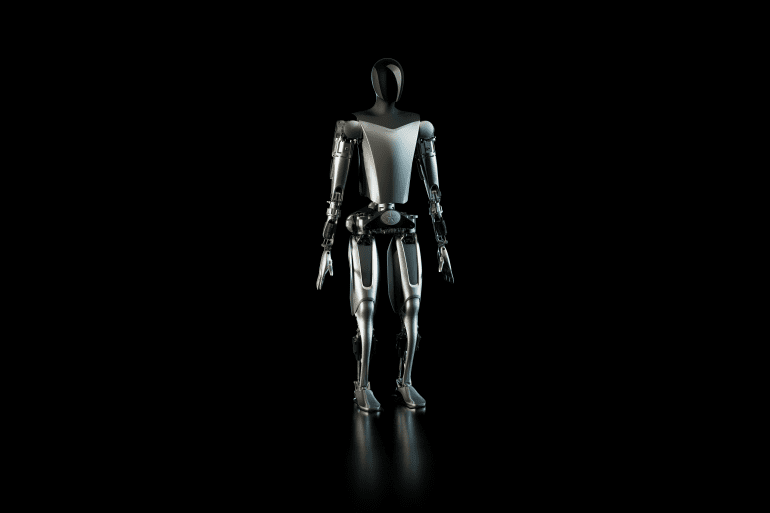- Tesla showcases second-generation humanoid robot, Optimus, at World Artificial Intelligence Conference in Shanghai.
- Optimus features advanced neural network and computer vision technology, touted for its multitasking capabilities.
- Tesla CEO Elon Musk sees Optimus potentially impacting Tesla’s market cap significantly in the future.
- Despite not in full production, Optimus attracts attention at the event, promoted on Chinese social media.
- Chinese robotic companies present alternative humanoid robots, reflecting growing sector interest.
- High production costs remain a barrier to widespread adoption of humanoid robots.
- China targets mass production of humanoid robots by 2025, per Ministry of Industry and Information Technology guidelines.
Main AI News:
Tesla’s humanoid robot, Optimus, made its debut at the World Artificial Intelligence Conference in Shanghai, showcasing advanced capabilities in neural networks and computer vision technology. Despite not yet being in full-scale production, Optimus represents Tesla’s ambitious vision for the future of robotics, capable of performing a variety of tasks. Tesla CEO Elon Musk expressed optimism about Optimus potentially bolstering Tesla’s market cap to US$25 trillion in the future.
The event garnered significant attention, with Optimus displayed behind glass and not interacting with visitors. Tesla actively promoted the robot on Chinese social media platform Weibo, inviting the public to witness the evolution of humanoid robotics.
The Shanghai conference featured a range of Chinese robotic companies presenting their own humanoid robots as alternatives to Optimus. Companies like Fourier, Tlibot, Dataa Robotics, Robotera, Leju Robot, Shanghai Kepler Robot, and Ti5 Robot showcased their innovations, reflecting China’s growing interest and investment in humanoid robotics.
While humanoid robots are gaining traction in sectors such as education, entertainment, healthcare, elder care, and manufacturing, they remain in the early stages of development and are not yet commercially viable. High production costs pose a significant barrier, with estimates ranging from 500,000 yuan to 1 million yuan per robot, depending on complexity. In contrast, Tesla’s Optimus is anticipated to be priced around US$30,000.
Leju Robot highlighted its Kuavo robot powered by Kaihong OS, an operating system derived from Huawei’s OpenHarmony, underscoring the challenges in developing robust software systems for humanoid robots.
Looking ahead, China aims to achieve mass production of humanoid robots by 2025, as outlined in a guideline from the Ministry of Industry and Information Technology, signaling the country’s strategic focus on advancing AI and robotics technologies.
Conclusion:
Tesla’s introduction of Optimus at the World Artificial Intelligence Conference underscores its commitment to advancing humanoid robotics. While showcasing impressive technological capabilities, the high costs and developmental challenges highlight current limitations in widespread commercial deployment. China’s strategic aim to achieve mass production by 2025 signals a competitive push in the global AI and robotics market.

